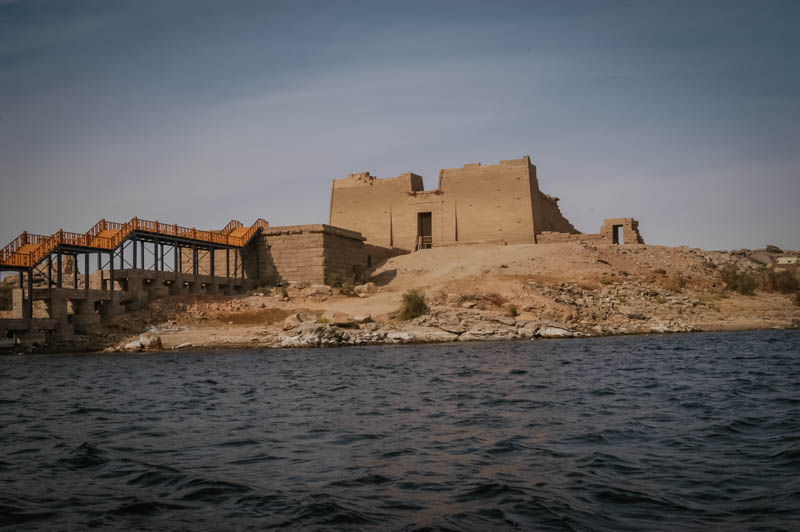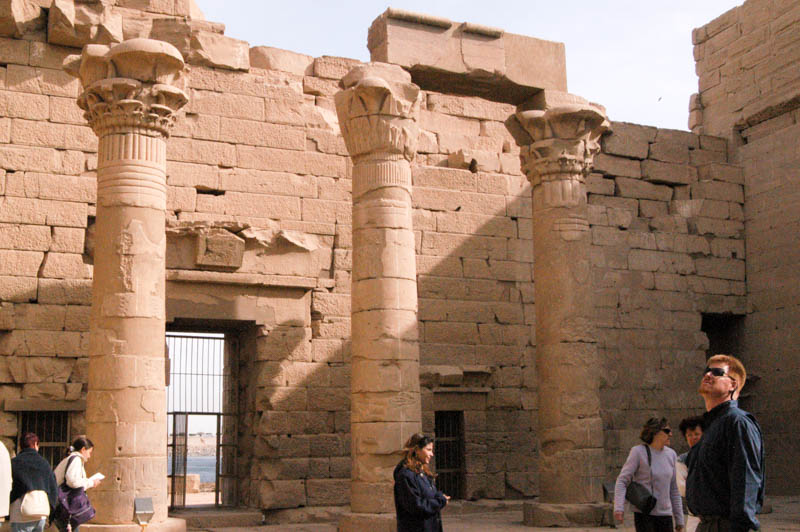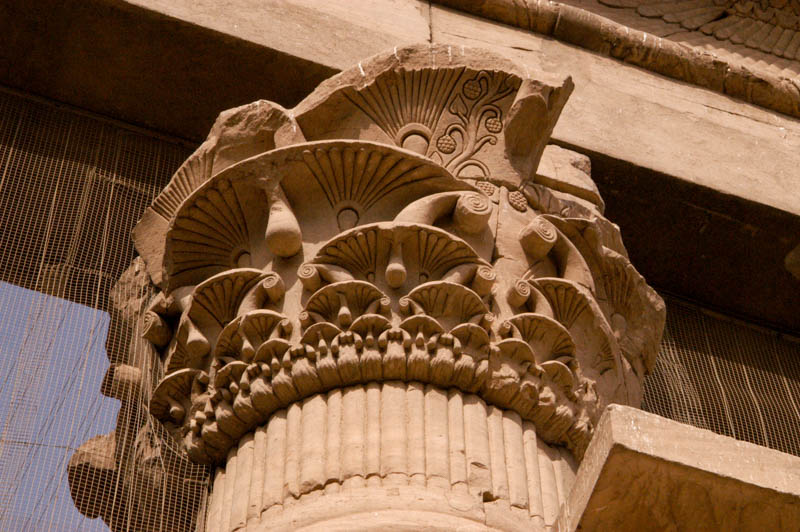The temple on Kalabsha is the largest freestanding Nubian temple in Egypt. It, took, was relocated by UNESCO with the building of the High Dam. It is now marooned on a small island reachable only by boat, near the west end of the dam. The area was under military control until 1987, and only since the early 90s has the temple been accessible to tourists. Compared to the other temples in the area (notably Philae), it is not crowded and few tourists take an hour or so to wander the site.

The original temple was built in the 18th Dynasty to honor Mandulis, a particularly Nubian form of Horus, and was located bout 50 km south of Aswan. Mandulis is normally shown with an elaborate headdress of cobras and a sun disk. The elaborate temple that now exists is a Ptolemaic-roman version, which was moved to the current site in 1970. The German consortium that moved it cut the temple into 13000 blocks and reassembled them here.

While Nubia was a powerful force in early Egyptian history, by the time of Ptolemy it was a small, insignificant power. THe Romans had abandoned Nubia by the time Diocletian was in power.

A 30m causeway leads up from the water’s edge, which is used for those arriving by boat. THe causeway and pylon are set at a slight angle to the rest of the temple, a detail that has been faithfully represented in the new location. THe first courtyard is strangely shaped, in order to bring the whole temple into line. THe columns on one side of the courtyard are closer together to make everything match up. The temple was never completed.